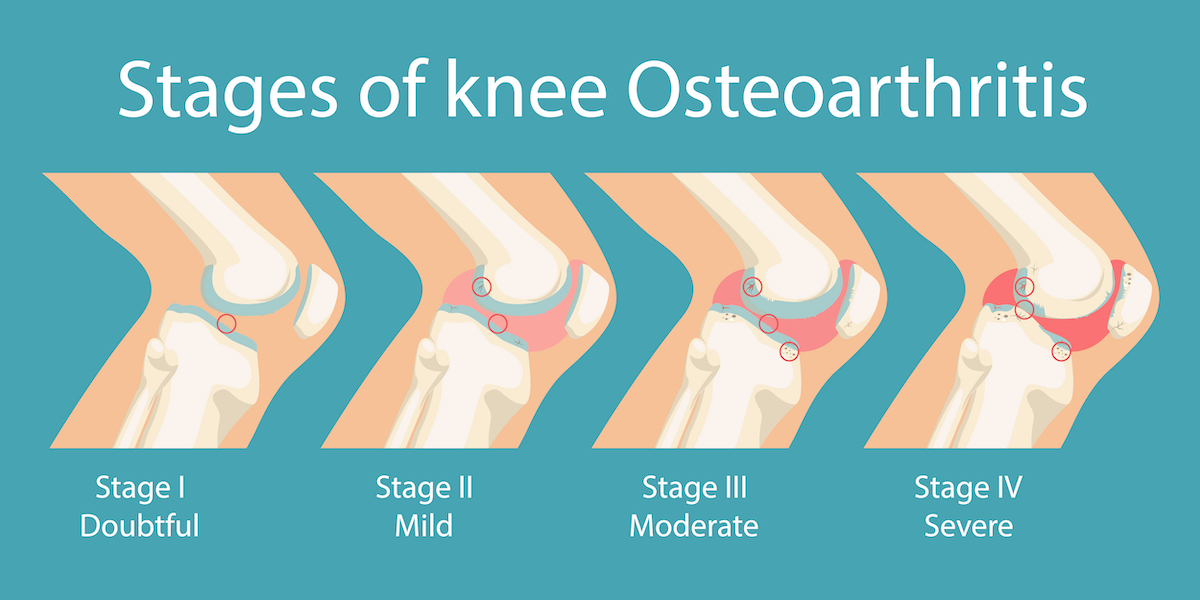Osteoarthritis (OA) is one of the 100+ types of arthritis. It’s the most common form there is. Approximately 32.5 million Americans are suffering from this type of arthritis. This type can be a primary condition, which means it’s the first diagnosed or the most prevalent disorder. However, osteoarthritis is common for it to be a complication of a previously diagnosed condition, such as rheumatoid arthritis and gout. All these factors make it incredibly important to know as much as possible about this condition. Think about: how to recognize this form of arthritis, whether I have an increased chance of getting it, and whether there are any treatment options.

What Is Osteoarthritis?
Osteoarthritis happens when the protective cartilage wears down over time. Cartilage is vital for your bones, as it cushions the ends of the bones. Once this wears down, the ends of the bones start rubbing against each other, which damages the bones and can cause a lot of pain. This type of arthritis can affect any joint, but the joints in the hands, knees, hips, and spine are the most common. This condition is also often called ‘wear and tear disease’ or degenerative joint disease (DJD). They used to think OA only affects the cartilage in the joint, but it affects the entire joint.
Risk Factors of Osteoarthritis
As we get older, our body gets older as well. This means we’re getting more ailments. Osteoarthritis is one of those ailments. About 80% of people aged 55 and older have some form of osteoarthritis. This can be a very mild form with little to no symptoms, or it can be a more severe form and experience symptoms. Age is the biggest risk factor, but more factors increase someone’s chances of getting osteoarthritis – earlier in life:
- Gender, women are more likely to get OA
- Obesity
- Joint injuries or trauma
- Frequent stress in the joint, like playing sports or having a labor-intensive occupation
- Heredity
- Bone deformities
- Metabolic diseases, like diabetes & hemochromatosis
- Decrease in estrogen
Usually, osteoarthritis progresses slowly, but inflammations & injury to joints and bones can speed up the progress, as this can cause changes in the bones and deterioration in the tendons, ligaments, and cartilage. Most people think (any type of) arthritis isn’t deadly, but osteoarthritis can have some serious – even deadly – complications. These include heart diseases, kidney diseases, and diabetes. The sooner someone recognizes the symptoms, the sooner it’s diagnosed, and the right treatment plan is set up to manage symptoms.

Symptoms of Osteoarthritis
Unlike other types of arthritis, symptoms of osteoarthritis develop slowly and worsen over time. This period can be months or years. Warning signs of osteoarthritis include:
- Joint pain
- Stiff joint(s)
- Tender joint(s)
- Loss of flexibility in the affected joint(s)
- Grating sensation when using the affected joint(s)
- Bone spurs
- Swollen joint(s)
In case you suffer from the above-mentioned symptoms, for example, painful and/or stiff knee joint or finger joints that don’t go away, make sure you make an appointment with your professional healthcare provider to examine these symptoms.
Treatment Options
After hearing about your symptoms and a physical exam, your professional healthcare provider will do some extra tests if he or she suspects you’re suffering from osteoarthritis. This can be an imaging test, like CT or MRI scans, and or draining fluid from the affected joint – if the joint is swollen. Once the diagnosis of osteoarthritis is made, a treatment plan can be established. Possible treatment options are:
- Pain medication, like NSAIDs
- Exercise
- Intermittent hot and cold packs
- Weight loss
- Dietary changes
- Supportive devices, like braces, orthotics, and/or walkers
- Intra-articular injection therapy
- Surgery
So far, no medication reverses or slows down the progress of osteoarthritis, only medication to manage the symptoms. Surgery is advised only when all other treatments fail to have little to no effect – such as in a more advanced stage of OA. Changing your lifestyle, like getting enough sleep, drinking enough water, quitting smoking & drinking, changing your diet, and taking vitamins and other supplements will help you live a better life. It is always a good idea to do your own (online) research. We love to help you with this, so start your search here:

